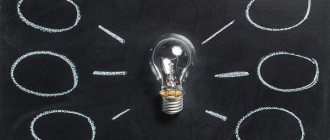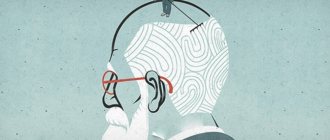Not everyone knows how to draw, but every person, willingly or unwillingly, did it. Fine art lessons at school, involuntary creation of different pictures with a ballpoint pen on a notebook sheet during a boring lecture or meeting, drawing patterns on a foggy or snowy window - there are many such situations that can be cited as examples. Observing people drawing, psychologists came to the conclusion that at such moments, with the help of graphic and color images, all the most intimate things spill out. Thus, at the end of the 19th century, isotherapy was created at the intersection of three sciences - psychology, psychiatry and art history.
What it is
In the narrow sense of the word, isotherapy is a direction of art therapy that uses fine art methods to normalize the mental state of children and adults. In a broad sense, this is art therapy itself, since initially it was meant as work with drawings of people who need the help of psychologists and psychotherapists. It was later that it acquired new trends (dance, sand, drama, music and other therapies), so it was necessary to allocate a separate niche for painting.
Initially, isotherapy was used in psychiatry to diagnose diseases of the mentally ill (late 19th century). Then, having formed a separate direction, she migrated to psychotherapy as part of the treatment course for certain mental disorders. Today it is used in many areas. For example, in psychology this is one of the methods of both testing and correction. She is actively involved in social work not only with children suffering from deviant behavior, but also with various problem segments of the population, including the elderly, disabled, and people without a fixed place of residence.
How it works
In psychology, there is the concept of “overcontrol” - this is the part of the mind that censors all forms of thought. It is because of this that we do not say out loud everything we think about. But he is completely powerless in front of images, in particular those that are created in the process of drawing. Therefore, by carefully studying what a person has depicted, psychologists are able to understand what is actually happening to him and how he can be helped. Sometimes the simple act of pouring out what has accumulated inside is enough, and it becomes easier without the involvement of additional therapeutic techniques.
Color therapy and art therapy
In the field of art therapy and psychology, color therapy is most often used through drawing with certain colors and meditation on color accompanied by relaxing musical accompaniment. Any person intuitively practices color therapy, without even realizing this fact.
By choosing certain colors in clothes, accessories, food, etc., a person gets the energy that he currently lacks from the colors he chooses. However, we all have our preferences for certain colors and ignoring or excluding others. For what reasons one person likes this or that color is not given to us to understand, but we know for sure that the choice of colors occurs unconsciously, intuitively, and therefore is the most truthful and trustworthy when diagnosing and correcting the condition.
Because color is the most important factor that largely determines the state of a person’s psychological and physiological health. In each color we can find a whole sea of shades and tones, immersing ourselves in which we are filled with their energy, strength and deep content. And only with such a full sensation of color, when we absorb and taste it, when we enjoy its perception, we can understand what this color means to us and feel its influence on us as much as possible.
Color therapy is the most natural and gentle way to restore strength, energy and health. This is a pleasant and exciting method that can quickly increase a person’s mood, energy level and vigor. Once you have tried color therapy in action and felt the effectiveness of its effects, you will want to experience its resources and capabilities again and again.
From the history
The first references to isotherapy date back to the end of the 19th century, when such a term did not even exist. The notes of a doctor in a French mental health clinic describe how his patients loved to draw during the exacerbation of their illnesses and gave up this activity as soon as they recovered. These ideas were picked up by the psychiatrist M. Simon and the forensic physician A. Ardier, who began to use drawings to clarify the diagnoses of mentally ill people. Many consider them to be the real founders of this trend in psychotherapy.
The term itself was first used by Adrian Keith Graham Hill, an English artist, teacher, art therapist, and quite a popular TV presenter. After graduating from the School of Art and going through the First World War, in 1938 he ended up in a tuberculosis dispensary. It was there, observing the sick, that he concluded that the disease was looking for a way out through drawings. After World War II, he began to actively introduce art therapy into psychology and psychotherapy. Visual arts were successfully used in working with children who went through the horrors of Nazi concentration camps.
The technique has become incredibly popular and has developed into a separate, independent direction. The idea was picked up by such famous psychologists as K. Rogers, R. May, A. Maslow. They all agreed that every person involuntarily holds back abilities that need to be released for successful self-realization, and they considered isotherapy to be one of the most effective ways for this.
How does color therapy affect health?
In order for a person to be in a state of health, his soul, mind and body must be in harmony and interact in concert. If a person’s health deteriorates and diseases appear, then first of all it is necessary to awaken and activate the body’s hidden reserves, give the person access to them and teach him to feel and trust himself. An art therapist, using special art and color therapy techniques, awakens hidden resources in the client’s body that can restore health and cure diseases. Color therapy, having a direct impact on our feelings and inner world
, provides amazing opportunities for activating hidden abilities, talents and human potential.
Goals and objectives
The main goal of isotherapy is to extract from a person’s subconscious what he does not admit even to himself, let alone share it with someone. Sometimes he is unaware of the problems that are stored in the subcortex and prevent him from freely enjoying life.
Example. Parents brought to an appointment a girl suffering from low self-esteem, many complexes, and socially maladapted. At the same time, cognitive abilities (thinking, memory, imagination) were at a level appropriate for her age. When isotherapy was used in classes with her, the psychologist noticed the same detail in all the drawings - a cat. Moreover, she was always portrayed as black, scary, big and angry. When talking with the parents, it turned out that there were never any animals in the house. In the process of further work with the child, it was revealed that the problem was an undeveloped relationship with the first teacher, who had an authoritarian teaching style and thereby suppressed the girl. Her last name was Koshkina.
Here are just some of the tasks of isotherapy:
- help to throw out everything hidden and unconscious;
- express emotions and feelings in a way that is safe for yourself and others - remove the censorship of “super control”;
- free from aggression, nervousness, psychological constriction, jealousy, phobias, imbalance - stabilize the mental and emotional state;
- develop communication skills for social adaptation, fill the communication gap;
- raise self-esteem, get rid of complexes;
- promote self-realization;
- help solve family problems;
- Unleash your creative potential and open up new possibilities.
Depending on the person with whom isotherapy is used, its tasks may be slightly adjusted. For example, it helps preschoolers to adapt to the world around them, children with disabilities to express their emotions, autists to admit their fears, and adults to stabilize their condition.
Basic principles
Isotherapy classes are organized taking into account the basic principles on which this area is based.
- You cannot set the task to draw beautifully or correctly. The more arbitrary the image, the more accurately it will convey what is happening inside a person.
- Do not provide opportunities for self-evaluation and criticism (“I can’t draw,” “I’m not much of an artist”).
- Provide a wide range of visual instruments. Their choice can tell a lot: a pencil will be taken by a pedant or a perfectionist, paints by a freedom-loving nature, felt-tip pens by a person prone to insincerity and lies.
- No rulers, compasses or other drawing supplies. Everything is done entirely by hand.
- Create an appropriate environment so that there are no distractions.
- A psychologist (psychotherapist) should not interfere in the drawing process: you cannot comment, clarify, or explain anything.
- It is imperative that the painter, upon completion of the work, comment on what he captured. Sometimes even a specialist can misinterpret what is depicted.
- In group classes, other participants should not be allowed to comment on others' drawings without their consent.
- To track changes occurring in a person, a specialist collects drawings into a separate portfolio, based on which he regularly draws conclusions and adjusts the course of correction or treatment.
If one or more principles are violated, isotherapy classes may turn out to be completely useless and ineffective.
Isotherapy as one of the methods of art therapy in the education system
STATE BUDGETARY INSTITUTION OF ADDITIONAL EDUCATION OF THE ROSTOV REGION “REGIONAL ECOLOGICAL CENTER FOR STUDENTS”
Isotherapy as one of the methods of art therapy in the education system
Performed by:
Medyanaya Maria Aleksandrovna
methodologist of the department of local history and patriotic education
GBU DO RO OETSU
Rostov-on-Don
2019
- Introduction
According to the results of a study conducted by the American company Dell EMC, the volume of global information increases by more than 2 times every 2 years. A huge flow of information falls on a person, it would seem great, we can operate with enormous knowledge, receive it from the outside, and turn it to our advantage. But is this really so...
An overabundance of information turns it from useful into completely unnecessary “information garbage”; “information overload” occurs. This term was widespread in psychology, but has now gone beyond its boundaries and become widespread.
Modern students are no exception, the entire flow of information “falls” on them in a huge lump, the media, Internet resources all have a detrimental effect on the child. Many children cannot regulate the time they spend on the phone or the Internet, even if this is all very important for their studies. They cannot filter information correctly, and there is no point in remembering it, because it is always at hand. This all affects memory and the thinking process as a whole. Also, the child does not communicate with peers as he should, of course, this leads to social isolation. Due to many factors, this very “overload” occurs, which has a very bad effect on the student’s psyche: stress, depression, fears.
Modern education pays great attention to psychological assistance for children. Now in kindergarten, a psychologist works with children, evaluates the child’s personal characteristics, his psychotype, mental and behavioral characteristics, his natural inclinations, and fears.
- From the history
“Art therapy” is a fairly new direction in psychology. Like all areas of psychotherapy, it came out of clinical practice and implied the influence of art on a person.
The first mentions of this type of therapy appeared in the 19th century, when doctors in psychiatric departments noticed that patients during exacerbations loved to draw and stopped doing it when they were recovering.
The term Art Therapy was first used by E. Hill (English artist, teacher, art therapist), who, following Freud, believed that a person’s initial thoughts and experiences arising in the subconscious are expressed in symbols and images. But Freud himself never used drawings, unlike his student and follower C. Jung. Modern psychotherapists consider Art Therapy as an independent type of therapy.
Today Art Therapy is used not only in clinics, it is available as one of the new trends, “Art Therapy at School”. This therapy is used not only for treatment, but also for the prevention of psychological problems. This is due to the fact that it gives the person directly involved in it confidence in their abilities, restores a sense of self-worth, helps with increasing sleep disorders, reduces stress and frustration, and increases the adaptive abilities of the individual.
To balance the child’s psycho-emotional state, you can use a technique such as isotherapy
. In a narrow sense, isotherapy is a direction of art therapy that uses visual arts methods to normalize the mental state of children and adults.
Initially, isotherapy occupied a leading role in art therapy, only then music therapy, bibliotherapy, fairy tale therapy, mask therapy and others were added to it.
- Goals and objectives of isotherapy
primary goal
isotherapy to extract from the child’s subconscious what he does not even admit to himself, to extract from the hidden corners of the soul the most important experiences, fears, and problems.
Tasks
isotherapy:
- help to throw out everything hidden and secret;
- get rid of aggression, fears, phobias;
- free yourself from nervousness, psychological constriction, imbalance, etc.;
- increase self-esteem;
- get rid of complexes;
- help solve family, social, interpersonal problems;
- help self-realization;
- unleash your creative potential.
These are just a few of the problems that can be solved using isotherapy techniques.
- Isotherapy in a modern school
Most modern schools have such subjects as Fine Arts, Labor, World Art Culture, Music. But in traditional lessons, children receive grades for their knowledge, skills, and achievements, which does not allow them to relax and enjoy their creativity to the fullest.
Art therapy includes quite a few different techniques and methods: music therapy, bibliotherapy, play therapy, mask therapy, collage, sand therapy, etc.
One of the significant techniques is isotherapy, we will dwell on it in more detail, because In this technique, creativity is fully manifested, negative energy splashes out and a person gets to know his “I”.
Classes with art materials: paints, clay, plasticine, paper, and other various materials allow the child to carry out therapeutic tasks: working with fears, aggression, overcoming emotional problems, interacting with other children, developing motor skills, expressing their feelings and experiences through art.
Isotherapy is a wonderful technique because... prevents the child from communicating with the leader and peers, because often children can withdraw into themselves and not make contact, but express their thoughts, feelings, and experiences in the form of a drawing.
It is important to convey to the child that isotherapy does not have the goal of learning to draw; the main task in this method is to get to know yourself, to hear the hidden corners of your soul, and to give vent to creative energy.
- Recommendations for isotherapy classes
Isotherapy develops communication and interaction skills, self-confidence, promotes motivation of cognition, creativity and learning; develops and corrects the emotional sphere; stimulates the development of fine motor skills; develops higher mental functions such as thinking, attention, speech, imagination; helps to correct fears, worries and suffering; has a relaxing effect, since with the help of drawing the child takes a break from negative emotions and thoughts and relieves tension.
First, we need to decide for what purpose we are starting to engage in this technique.
If a child is aggressive, there are negative thoughts, emotions and actions, if he is stressed or depressed, then you need to choose modeling rather than drawing. Plasticine, clay, fireclay, these materials will absorb all the negativity, the material is very plastic, amenable to all actions, it can be torn, crushed, bent, pulled, rolled... The child will put his emotions, all the negativity into these actions. In this case, drawing will only aggravate the situation, but modeling, on the contrary, will calm it down.
If you have to choose between a drawing or an applique, then you should choose the first option. Here the child will express himself creatively to the fullest; it is important to give preference to paints (oil, watercolor, gouache, acrylic) rather than graphic materials (plain or colored pencils, sanguine, crayons, pastels, etc.). Paints and brushes are very plastic materials; the child himself chooses the pressure and severity of the line, he can paint with a spot or only with lines. A pencil does not give such liberation in drawing. You should also provide a variety of colors, not using only primary colors (blue, red, yellow).
You should not use a ruler, compass, pattern and other devices, because... These items do not provide the greatest energy output; all isotherapeutic drawings should be done by hand.
- Principles of isotherapy
Practicing isotherapy should be based on certain principles. If one or more principles are missing, a given therapy may be completely meaningless.
- In this technique, the task is not to draw correctly, academically, beautifully. It is important that the drawing be arbitrary and give full release to negative energy.
- You need to convince the child not to evaluate your work and the work of other children; this point is related to point 1.
- Provide a wide range of visual instruments. Their choice can tell a lot: a pencil will be taken by a pedant or a perfectionist, paints by a freedom-loving nature, felt-tip pens by a person prone to insincerity and lies.
- The drawing must be drawn by hand without the use of drawing materials.
- The lesson should have a quiet, relaxed atmosphere, and there should also be enough space for each student so that the child can retire and open up fully.
- A psychologist or teacher should not interfere with a student’s work. Here there is individual work, personal experiences, filled with meaning only by the person himself.
- It is imperative that the person drawing must tell what he has depicted, so that he himself can understand why, for example, he has a certain fear.
- In group lessons, you cannot comment on the work of other children without consent.
The leader also collects student work to control or correct further work.
- Isotherapy methods
All isotherapy is divided into two types : passive
- when work is done on already created works of art (drawing, creating spaced copies) and
active
- creating something new, your own vision of the world, objects.
Participants are also divided according to the number of groups: individual, pair, group.
It is possible to use the following techniques when working with the practice of Isotherapy:
- Blowing paint, "Blotography". (Necessary tools: water, gouache or watercolor, brush, drinking straw).
In this technique, the drawing seems to be born on its own, you just have to start creating. This activity is not only exciting and useful in terms of getting rid of negativity and acquiring positive emotions, but also has a very beneficial effect on health. Because Blowing through a tube develops the lungs, the strength of inhalation and exhalation, and, in general, the child’s respiratory system as a whole.
- Drawing with palms (required materials: paints, brush, paper, water).
People have very developed tactile sensations, this drawing technique allows the child to relax, activates the child’s thinking and creative potential. The student completely relaxes, succumbing to the art.
- Monotype (materials required: paper, brush, paint, water, glass may be used).
This type of technique is very interesting because the child draws a blot on one half of the sheet before it dries, quickly folds the sheet in half and presses it to the other half of the sheet. It turns out to be an unusual blot that needs to be refined and drawn.
If you use glass, then the work is thought out in advance, and you also need to do everything very quickly so that the paint does not dry out. A certain design is applied to the glass, printed on a sheet and also finalized.
- Drawing on wet paper.
This technique increases the emotional mood of the group. Even children who do not know how to work in a group are more willing to make contact with others, and the process of interaction between participants proceeds more easily. With this type of technique, the colors are pliable, as if flowing, which gives a huge splash of creative energy.
- Drawing on crumpled paper.
Along with the technique of drawing on wet paper, there is a technique of drawing on crumpled paper. Teenagers easily work with this technique; it is unusual and new for them. You can use crumpled paper instead of a brush, you get fancy spots, which are then refined.
Also highly effective are techniques for drawing with certain objects: gauze, cotton swabs, potato stamps, tampons, feathers, leaves of various trees, twigs, stones, etc.
A huge surge of negative energy, the processing of fears, and the acquisition of positive thinking are facilitated by such techniques as splashing, soap bubbles, “Doodles,” finger painting, etc.
- Conclusion
Isotherapy is just one type of Art Therapy. This therapy leads to positive results: improved mood, increased communication skills and self-esteem. The child becomes calmer, more balanced, and makes contact with peers and adults.
To summarize, we can say that when practicing isotyropia, children relax, get to know themselves, reveal the depths of their subconscious and are freed from problems. Using this technique, you can get rid of a number of bad habits: addiction to alcohol, smoking, addiction to gadgets, the Internet.
- Used Books
- “Art therapy - new horizons” / Ed. A.I. Kopytina. - M.: Kogito-Center, 2006.
- “Art therapy for children and adolescents” / ed. Alexander Kopytin, Elena Sistovskaya. - M.: Kogito-Center, 2007.
- “The practice of art therapy: approaches, diagnostics, system of classes” / ed. Lebedeva L.D. - St. Petersburg: Rech, 2003.
- “Art therapy in working with children: A guide for child psychologists, teachers, doctors and specialists working with children” / ed. Kiseleva M.V. - St. Petersburg: Rech, 2006.
Types and forms
Forms
Isotherapy is presented in two forms - active, when a person draws himself, and passive, when he works with ready-made works of art. In the first case, he releases his unconscious, which breaks out from under the yoke of “overcontrol”. In the second, he expresses judgments that help the psychologist (psychotherapist) understand his inner beliefs and worldview, and sometimes his temperament.
For example, Malevich’s “Black Square” for rationalists is just a dark rectangle, for people with stuck accentuation of character - a failed picture, for a hyperthymic temperament - a multi-colored cube, for the affectively exalted - a rebellion in art, etc.
Types of activities
Isotherapy is carried out in the form of individual, pair and group sessions.
On practice
Despite the fact that isotherapy is actively used in working with adults, it has proven itself to be most effective in child psychology. This is explained by the fact that the child has a more vivid imagination, he is more inventive, loves games and experiments, pays attention to little things and details. It has been proven that children express the maximum of their emotions in drawings, which they are not always able to express verbally. And they do it completely sincerely, completely turning off that very “super control” that still functions too weakly for them.
For preschoolers
This direction is often used for preschoolers in kindergartens. Here the main task of isotherapy is to help them adapt to the outside world and society. What you need to know when organizing classes in this group:
- isotherapy is an excellent way to switch attention from one activity to another;
- it helps preschoolers establish contacts with each other and resolve conflicts;
- to develop creative abilities, it is useful to arrange paired activities so that children complement each other in creating a common image;
- It is also advisable for an adult to draw together with children (to establish contact and build trust), and then comment on what is depicted, teaching children self-analysis and reflection;
- Bright colors and a wide selection of drawing tools lift the child’s mood and allow him to open up and realize himself to the fullest.
The most important thing that adults organizing isotherapy classes for preschool children should take into account is the desire and creative impulse of the child himself. Without these components, the business can be considered a failure. Under no circumstances should you be forced to draw.
Recommendation. There is a research work “Isotherapy in the correction and development of the psycho-emotional sphere of preschool children” (author - N. Kozlova), which describes in detail aspects of this area.
For children with disabilities
Isotherapy as a method of psychological correction is often used in working with children with developmental problems:
- disabled people;
- with developmental delay (physical, mental, mental);
- with mental disorders;
- with physical disabilities;
- outcasts.
Often, for children with disabilities, isotherapy becomes the only way to express themselves and their own problems. It unloads them emotionally, allowing them to free themselves from negative emotions and aggression. Helps the psychologist (psychotherapist) understand the child and bring him into contact. As practice shows, using this approach in working with such children always leads to exclusively positive results. According to statistics, after only 3-4 lessons (this depends on individual characteristics), their mood noticeably improves, sleep normalizes, communication skills improve and self-esteem rises.
For schoolchildren
Despite the fact that isotherapy is mainly used in working with children in kindergarten, it can also be actively used in classes at school. It has little in common with art lessons, where a specific task is given, the completion of which is graded. This forces “overcontrol” to kick in. The exception is classes when you are allowed to draw on a free topic.
School psychologists should ideally monitor children's performance in art classes. By analyzing the dominant colors that a child uses, the choice of drawing tools, the observance of proportions, leading images and motifs, it is possible to promptly identify the mental problems he has. After all, it’s clearly not the norm when a 2nd grade student even depicts spring exclusively in dark brown. In isotherapy, this shade signals the experience of negative emotions and physical discomfort. The psychologist’s task is to find their sources and help the child overcome these negative feelings.
Recommendation. You can read more about this in the research work of N.P. Kulikova “The influence of isotherapy on the correction of the emotional sphere of students.”
Isotherapy for teenagers has its own specific features, since it is difficult to purposefully encourage them, even in classes with a psychologist, to draw something (they are shy, afraid to show their subconscious, do something wrong, and other reasons). Therefore, here the specialist is required to use a completely different work scheme:
- with the help of parents, find out the teenager’s interests in painting (this can be modern trends: graffiti, street art, 3D drawings, photorealism, fantasy, body art, mail art, net art);
- study his work in this direction;
- identify patterns in drawing techniques and created images;
- conduct conversations with him about the current that interests him;
- after contact has been established, ask to draw something in this direction.
After this, you can gradually collect a portfolio and conduct targeted work to identify and correct existing psychological problems.
For adults
In the capable hands of a professional psychologist (psychotherapist), isotherapy can be used as an effective means of correcting and stabilizing the mental state for adults. Despite the fact that they, as a rule, are more stingy with emotions, such activities allow them to remove the censorship of “overcontrol” and express in drawings what really drives them: fears, childhood and adolescent psychotraumas, internal complexes, obsessive thoughts and ideas .
If in kindergartens and schools group and paired classes are usually organized, then individual classes with adults are most effective when they are not constrained by anything.
For children, isotherapy offers a wide range of techniques and methods (using plasticine, glass and other applied materials). When working with adults, a sheet of paper and a pencil or paints are often sufficient.
What is color therapy based on?
Color therapy is based on the fact that nature and the human body have 7 colors that are in balance with each other. If this balance begins to become distorted and destroyed, then our body can get sick. What does illness mean from the point of view of art therapy and color therapy? First of all, this is the emergence of disharmony, a violation of order in the body. The disease can combine a number of symptoms, which, with a protracted process, move to the chronic stage - the stage of the disease. In turn, the orderliness and harmony of a person’s internal state represents health.









